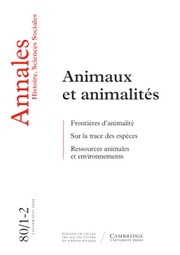Article contents
Paléodémographie : ce que nous apprend la Nubie soudanaise
Published online by Cambridge University Press: 25 May 2018
Extract
Depuis l'étude célèbre de l'anthropologue américain E. A. Hooton en 1930 sur la mortalité des Indiens de Pecos Pueblos, des dizaines de travaux de paléodémographie ont été publiés, couvrant toutes les périodes de l'histoire humaine, de l'archanthropus d'Asie jusqu'au Moyen Age d'Europe centrale.
Il nous a semblé intéressant de commenter une table de mortalité, publiée dans les Annales en 1969, obtenue à partir de l'analyse ostéologique de vestiges humains ; cette table est caractéristique de quelques aspects singuliers de la mortalité observée à partir des cimetières.
Les résultats de l'analyse anthropologique permettent d'indiquer que la mortalité infantile et celle de la petite enfance, du Xe au XIVe siècle au Soudan, auraient été très basses, avec respectivement des quotients de 49 et 51 ‰. En revanche, durant l'enfance, l'adolescence et la grande adolescence, la mortalité aurait atteint des niveaux très élevés.
Summary
Using a series of 328 skeletons exhumed from the Nubian cemetery of Meinarti (10th-14th centuries), anthropologists have constructed a table of mortality rates. According to this chart, the general characteristics for Meinarti seem to be: a very low rate of infantile mortality, an important percentage of deaths during childhood and adolescence, and finally a high rate of mortality from age 21 on. No one seems to have lived to be older than 55. This curve differs radically from all other curves of human mortality known to history. But in reality this construct is false. It is the product of methods which contain grave mistakes and systematic errors.
Another approach—Ledermann's model tables—also led to a dead end. The structures of post-industrial mortality which were introduced into the model tables made it impossible for the paleodemographer to use these tables to examine a cemetery with an archaic mortality structure of the Meinarti type. It has thus proved necessary to redefine not only the customary anthropological criteria used to estimate the age of adult skeletons at time of death, but the models which paleodemography is to use as a reference.
- Type
- Débats et Combats
- Information
- Copyright
- Copyright © Les Éditions de l’EHESS 1977
References
Bibliographie
- 8
- Cited by


